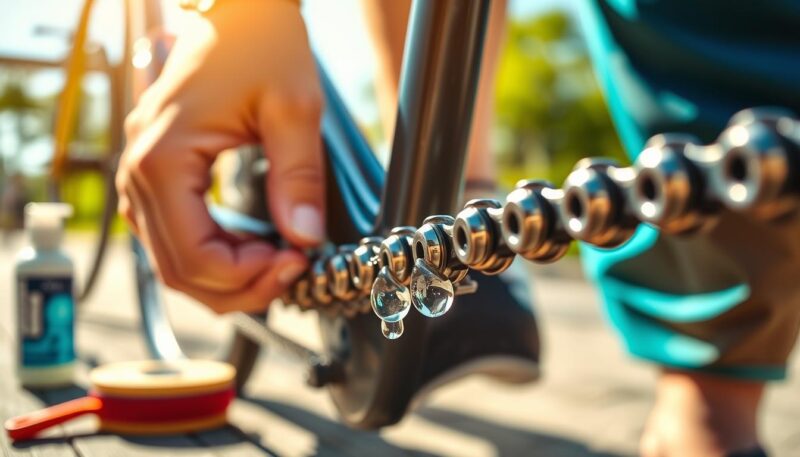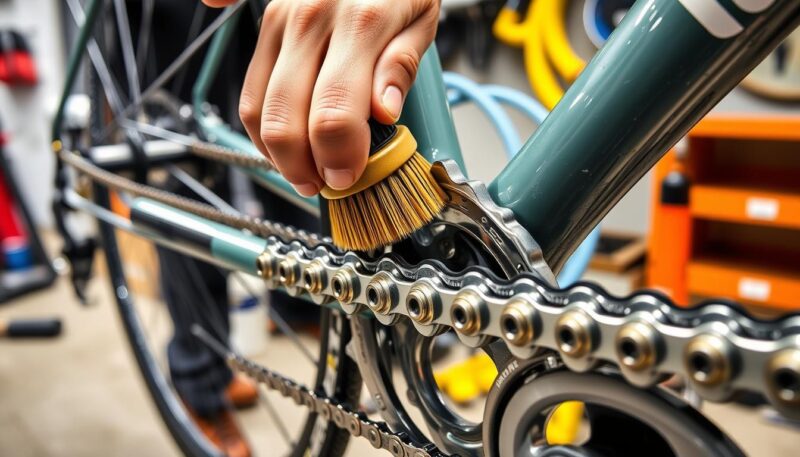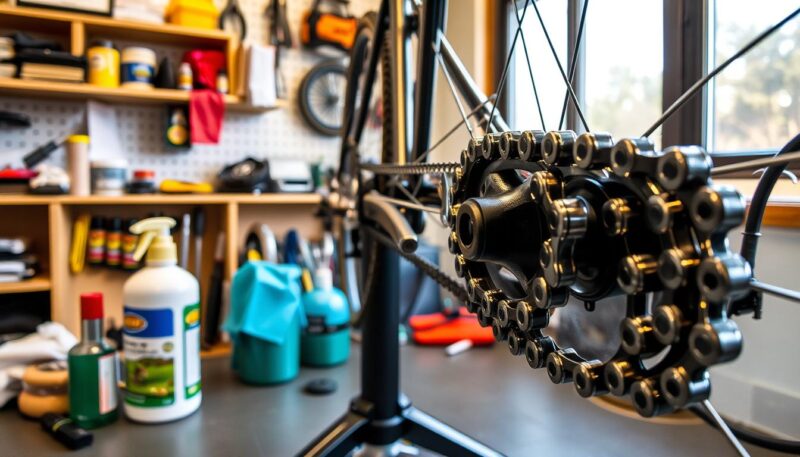Maintaining your bicycle might seem overwhelming, but one of the simplest and most rewarding tasks is learning how to clean your bike chain. Your bike’s chain is vital for its performance, as it directly influences the efficiency and longevity of the entire system. Regular cleaning and maintenance can save you from costly repairs while ensuring your rides are smooth and enjoyable. During those wet or cold months, your chain is vulnerable to dirt, grime, and even corrosive substances that can hinder its functionality. This bike chain care guide will provide you with essential tips and tricks to keep your bike running like new.
By following the steps outlined in this article, you will understand the importance of a clean chain and how it can lead to better performance and prolonged life for your bike. Whether you’re a beginner or an experienced cyclist, this information about bike maintenance for longevity will help you get the best out of your ride. Let’s dive into the critical reasons why you should prioritize chain cleaning and how to do it effectively!
Understanding the Importance of Cleaning Your Bike Chain
Cleaning your bike chain plays a vital role in maintaining overall performance and longevity. Regular maintenance not only enhances efficiency but also provides substantial cost savings over time. Keeping your bike chain in good condition ensures smoother rides and helps prevent unnecessary wear on critical components.
Benefits of a Clean Chain
The benefits of a clean chain cannot be overlooked. A clean bike chain significantly reduces friction, which minimizes power loss while riding. Studies indicate that a dirty chain can result in a decrease in efficiency by 3 to 5 watts. For cyclists who generate around 250 watts of power, this equates to a potential loss of 1 to 2 percent in output, impacting performance during rides. By maintaining cleanliness, you allow your bike’s drivetrain to function smoothly, offering a better riding experience.
Cost Savings from Regular Maintenance
Cost savings from regular maintenance are another crucial advantage of keeping your bike chain clean. A well-cared-for chain reduces the wear and tear on gears and other components, leading to less frequent replacements. Improperly cleaned chains can increase friction, causing significant energy loss and adding to maintenance costs. Regular cleaning, ideally every 100 to 200 miles or more often under tough conditions, can extend the life of your bike, ultimately making your cycling experience more economical.
Brands like Shimano, SRAM, and Campagnolo advocate for the importance of this upkeep, even recommending the use of a new quick-link with every chain installation. Using safer cleaning solutions and tools, as recommended by leading maintenance product manufacturers, further enhances the efficiency of cleaning routines.
| Maintenance Action | Frequency | Impact on Efficiency |
|---|---|---|
| Clean Chain | Every 100-200 miles | Reduces friction, enhances power |
| Lubricate Chain | After wet/dirty rides | Maintains smooth operation |
| Inspect for Wear | Regularly | Prevents premature replacement |
How to Clean Bike Chain: Step-by-Step Guide
Maintaining your bike chain requires a systematic approach. Follow these steps for effective cleaning and ensure optimal performance on every ride.
Gather Your Tools
Before starting, collect the necessary tools to streamline your cleaning process:
- Dawn Ultra Liquid Dish Soap – widely recognized for its grease-cutting ability ($15 on Amazon)
- Silca Chain Stripper – a favorite among bike enthusiasts and professionals ($36 at silca.cc)
- OXO Good Grips Dish Brush – ideal for scrubbing away dirt and grime ($8 on Amazon; $12 at Walmart)
- Amazon Basics Microfiber Cleaning Cloth – for drying and polishing ($10 on Amazon)
- Chain lube – to protect your chain after cleaning
Cleaning Process
Follow these steps for effective cleaning bike chain for better performance:
- Start by applying a degreaser, such as Silca Chain Stripper, to the chain while back-pedaling to ensure complete coverage.
- Use the OXO Good Grips Dish Brush to scrub away accumulated grime. Focus on the rollers and side plates for optimum results.
- Rinse the chain with hot, soapy water to remove the degreaser, followed by a rinse with clean water to eliminate any soap residues.
- Dry the chain thoroughly with a microfiber cloth to prevent rust and prepare for lubrication.
- Once dry, apply your chain lube generously, ensuring all surfaces are adequately coated.

Regular adherence to these bike chain maintenance tips not only improves your bike’s efficiency but also extends the life of your drivetrain. The frequency of cleaning can be adjusted based on riding conditions and mileage, with specific methods suited for different levels of dirt accumulation. For race enthusiasts, a simple cleaning ritual prior to each waxing can yield noticeable performance benefits.
Essential Bike Chain Maintenance Tips
Maintaining your bike chain plays a critical role in ensuring optimal performance on your rides. Regular cleaning and lubrication are essential tasks that can prolong the life of your chain and improve your bike’s overall efficiency. Understanding the right frequency of cleaning and the best practices for lubrication can take your biking experience to the next level.
Frequency of Cleaning
The frequency of cleaning your bike chain largely depends on your riding style and environment. For example:
- Mountain bikers generally need to maintain their chains more frequently due to exposure to dirt and grime.
- Regular commuters riding road bikes should check and oil their chains at least once a month.
- A good rule of thumb is to clean and lubricate the chain whenever you hear squeaking or see visible dirt buildup.
Best Practices for Lubrication
Using proper lubrication techniques enhances the life of your bike chain. Follow these bike chain maintenance tips:
- Select the right lubricant: Use specific bike chain lubricants tailored to your environment. Heavier oils can be beneficial in wetter conditions, while lighter oils work better in drier settings.
- Avoid household oils: Stay away from automotive motor oil or WD-40, as these can attract dirt and diminish chain performance.
- Initial factory lubricant: If your bike chain is new, it’s advisable to retain the original factory lubricant until it’s dry before applying a new oil.
- Chain wear assessment: Utilize a chain wear indicator, like Park Tool CC-3.2, to determine if the chain is worn out or needs replacing instead of cleaning.
- Effective cleaning and lubricating: After cleaning your chain with bike-specific degreasers such as Park Tool CB-4, apply about one drop of lubricant per link to avoid over-saturation.

Taking proactive steps for cleaning bike chain for better performance significantly affects your ride. Implementing these best practices for lubrication ensures your bike chain functions at peak efficiency and extends its longevity.
Conclusion
In conclusion, maintaining your bike chain through regular cleaning and lubrication is crucial for optimal performance and longevity. Learning how to clean a bike chain properly not only enhances your riding experience but also extends the life of your bike components. Adopting a bike chain care guide that includes routine checks and cleanings will significantly reduce wear and tear, ultimately saving you money on repairs and replacements.
For road cyclists, it’s advisable to clean and lube your chain every 100-150 miles, while mountain bikers should do so after every ride in challenging conditions. Commuters might find a weekly cleaning sufficient, depending on the environmental factors they encounter. Recognizing the signs that indicate your bike chain needs attention—such as noise during rides or visible dirt buildup—will help you stay on top of your bike maintenance for longevity.
Embrace these practices and invest in the right tools, such as degreasers and chain lubricants, to ensure your bike remains in optimal condition for years to come. With a commitment to regular maintenance and using appropriate cleaning techniques, you will enjoy smoother rides and lower costs in bike upkeep.






